How Historically Accurate is Assassin's Creed Valhalla?
Assassin's Creed: Valhalla lets us dive in the world of Nordic Vikings as no game before. What part of the game is the creator's poetical licence, and how much is actually accurate? In this text, we answer precisely this question.
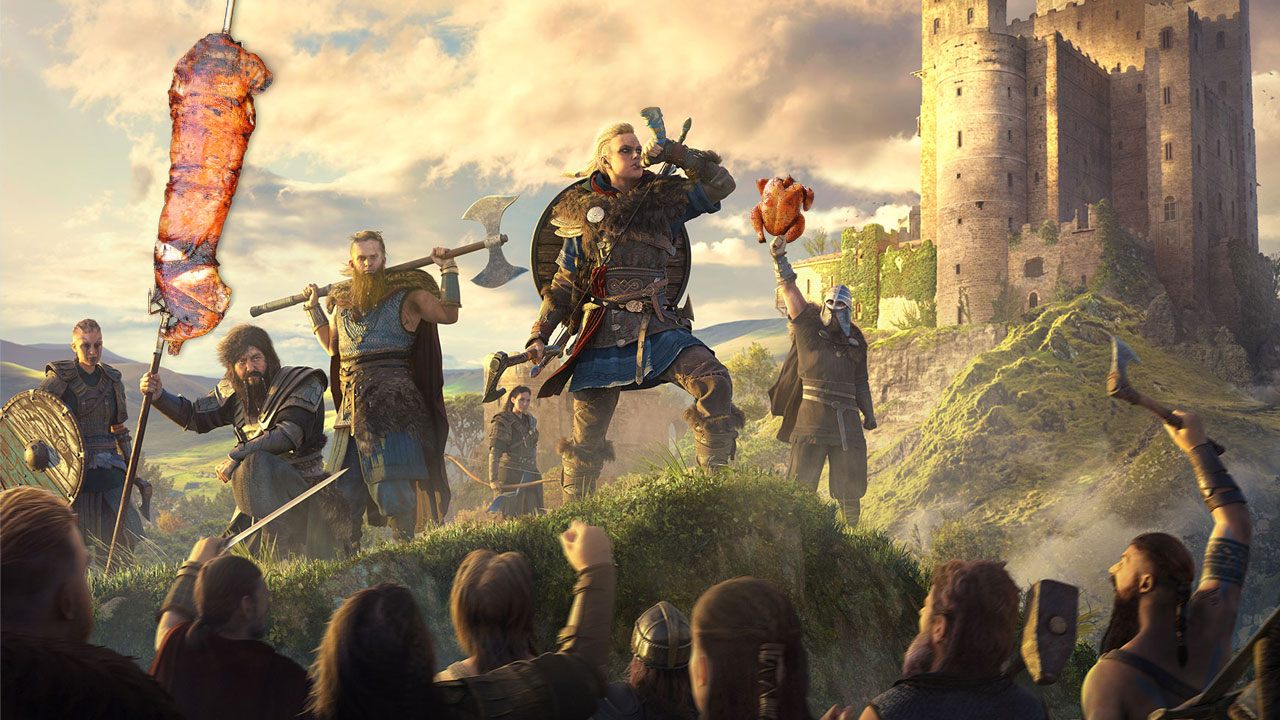
If you took warrior Eivor and have already traveled the territories of Norway and England in Assassin's Creed: Valhalla with them, or you are going to do so in the future, you're probably thrilled with the Norse setting. These somewhat mysterious warriors are lately quite popular, as evidenced by the TV show Vikings, for example. Some, especially fans of the Assassin's Creed series, may get hooked on the Nordse mythology and themes, and become more interested in exploring their history after playing Valhalla.
Ubisoft is known for its rather liberal approach to historical facts and authenticity, so we will not go into too much detail as to how historically accurate the game actually is. First of all, we want to bring you closer to the actual realities of Viking life in the Middle Ages, perhaps also to do away with some pop-culture myths, so that everyone can see for themselves how close – or to the contrary – Valhalla universe is to the facts. You'll be able to do it when the time is exactly ripe for you, as the game's really huge and full of secrets.
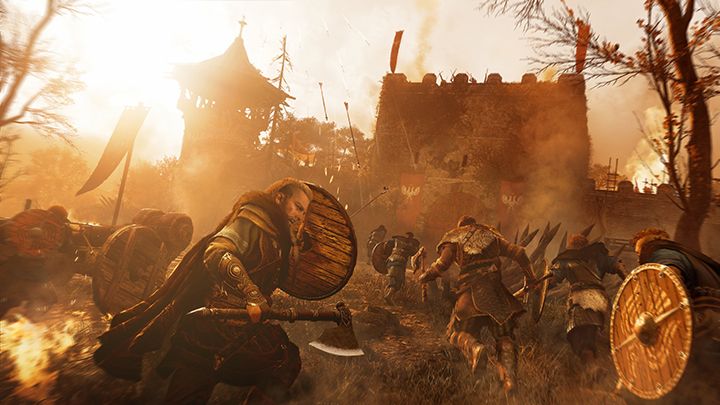
Before we begin, we want to disclaim: none of us have doctorates in Viking history. Therefore, in addition to studying various sources on our own, we decided to ask for help from real experts in this field. Our descriptions are enriched by the statements and comments of Leszek Gardela, a PhD, researcher at the Danish National Museum in Copenhagen, and Ms. Ewa Strukowska from a historical reconstruction group Utgard.
Not "A Viking," but "To viking.”
The term "viking" does not denote nationality or ethnicity, but a specific way of living. Therefore, Vikings might as well have been residents of lands outside Scandinavia.
Leszek Gardela, PhD
One of the most frequently repeated mistakes is capitalizing the word "viking," and thus suggesting it's a nation of people in a similar sense as, for example, the Saxons. Meanwhile, the origin of the word "viking" is much more complicated, and in scientific and historical works several different theories have been proposed on this subject. There have been attempts to combine it with the Old Norse word "vik" (Bay) and the old English "wic" (a port settlement), or the fornsvenska (Old Swedish) "vika" and the Old Norse "víkja," meaning "change of rowers." The latter in the feminine form "víking" meant a distant overseas expedition, and in the masculine "víkingr" – a participant of such expedition.
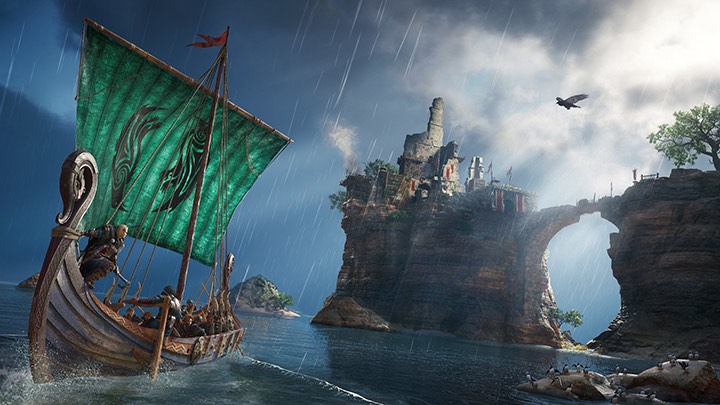
"Viking" also meant participation in long, overseas expeditions, mainly for military purposes and looting. Initially, this was the term used to describe any raid of this type, regardless of the ethnicity of the raiders, but during the period of Scandinavian dominance in the seas, the word kind of stuck to them. The terms "viking" and "vikingr" appeared in runic inscriptions and Icelandic sagas describing the 10th and 11th century. A viking could mean a trade expeditions (rather than a raid), and the ill fame didn't actually surround the word until after the viking era.
Horticulture and trade – not just looting
The vast majority of the Nordic peoples were farmers and herders, also hunters. They were excellent craftsmen – their embroidery or jewelry design is beautiful. And, of course, they were excellent merchants, who traded along the coast of all Europe, from the Mediterranean and the Black Sea, to the coasts of northern Africa, penetrating deeply inland using rivers.
Ewa Strukowska
From the 9th to the 11th century, we generally talk about the so-caled Viking Age – basically, a very turbulent time in all of Europe. I don't think the Scandinavians by any measure a more expansionist nation than any other people in Europe.
Leszek Gardela, PhD
The daily life of the vikings was not as turbulent and hazardous as pop-culture images try to convince us, and it did not consist solely in fighting and conquering other peoples. Thanks mastering maritime travel, they were able to venture into distant regions and trade with exclusive goods otherwise unavailable. Merchants from the North offered walrus tusks, seal and whale skins, as well as wood and iron. They were also known as slave traders, usually trafficking humans into the Arab countries. Assassin's Creed: Valhalla tries to portray this more peaceful side of the vikings, as some of the areas can be taken over not by military conquest, but rather completing a storyline.
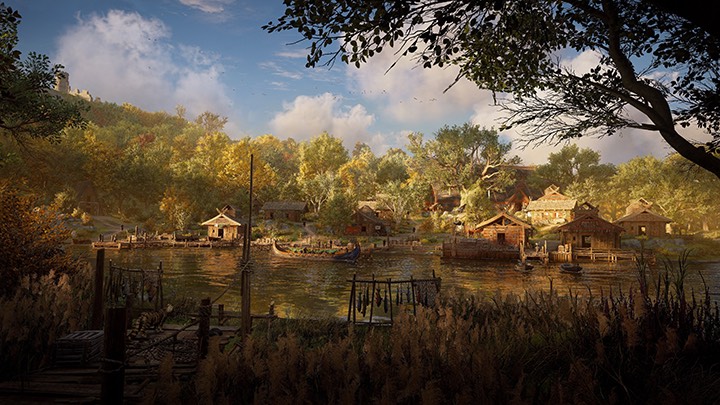
There, of course, were Invasions of faraway lands, and one of the main reasons for the conquest of other lands was certainly the desire to acquire more fertile lands for agriculture, which definitely was difficult in the Nordic world (with the exception of Denmark). Vikings usually worked hard in the fields, but the yield was often very modest. Famine was often a direct concern, and historians emphasize how unrealistic is the pop-culture image of a towering, strong Norse warrior.
The mortality rate among children was up to 40%, and the skeletons found from this period often showed signs of malnutrition, chronic diseases or congenital injuries. This was one of the reasons for "amateurs" to go on looting expeditions – people, whose regular profession involved crafting or carpeting, rather than cracking skulls with axes.
Among those who went on vikings, there were both "pro" warriors, but also people, who ended up participating for economic reasons.
Leszek Gardela, PhD
Spiritual riches taste best
If so many Vikings were merchants or farmers, then where did the stereotype of a fierce, brutal warriors come from? There's an important detail that Assassin's Creed: Valhalla actually nicely emphasizes. Playing as Eivor, we often find gold chests with precious loot, hidden in temples of the conquered lands. This is quite accurate historically. Settlements and temples were eagerly targeted during raids, simply because places of worship usually contained valuable items, and at the same time the defense was not as strong as in large cities or forts.
Note, however, that friars and monks were the literate minority of that world, and as such, they were able to perpetuate the image of Nordic peoples as brutal, savage raiders. We can't just dismiss that as their malevolence though, as they indeed only had a chance to recognize the vikings as looters.
The clergy and lay elites developed the ability to write most rapidly. Coincidentally, they were also the most profitable target for raiders.
Leszek Gardela, PhD
The Vikings needed gold and riches (to buy land, to get married, to get high-end weapons more quickly, to buy people, build ships, and thus gain power) – and here, indeed, temples, monasteries or small towns were the best targets. And it were the monks who could write, their testimonies and version of history was preserved.
Ewa Strukowska
Fictitious horns
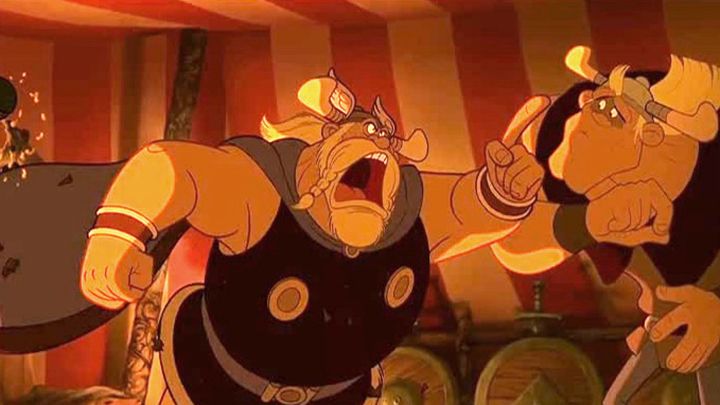
Another common misconception is the iconic horned helmet. In fact, Nordic warriors used ordinary, nasal helmets, which were very popular throughout the whole Europe around the 10th century. They differed mainly decorative elements.
So far, only one complete helmet was extracted from the Scandinavian graves. It is an artifact from the mound in Gjermundb, Norway. It is a helmet of a different type, formally referencing helmets from a previous era, the so-called Vendel Period.
Leszek Gardela, PhD
So where did the rather popular image of a sinister helmet with horns come from? From much later, more civilized times, although they aren't just a figment of imagination.
Horned helmets were conceived in the 19th century for the operas Nibelungenringen and Valkyrie. The level of historical knowledge and archaeological dating capabilities were not very high at the time. The excavations associated with the Scandinavian peoples actually yielded the remains of horned helmets, and they were used because they were so very distinct, intimidating, and awe-inspiring. Today we know that these are remnants of a much earlier period. There are indications (based on iconography) that similar helmets may have been used in religious ceremonies.
Ewa Strukowska
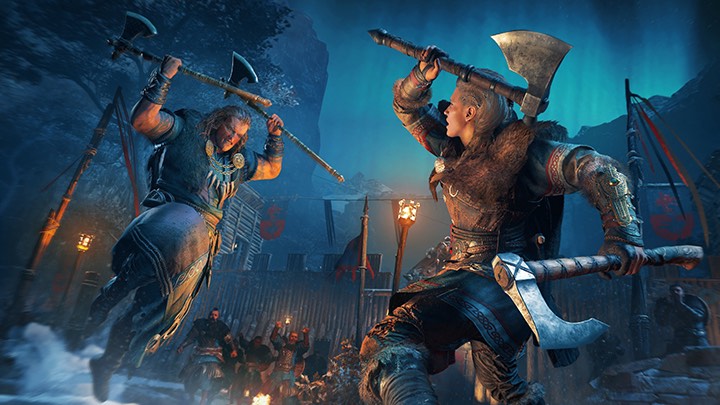
Assassin's Creed: Valhalla quite realistically shows this fact, as there aren't many "horned" warriors among the members of the clan. Equally interesting is the issue of weaponry used by the vikings. The game gives us access to an axe at the very beginning, and this weapon is used throughout the game in different variations, though we can also use swords, bows, etc.
In fact, the type of weapon used depended heavily on the economic status of the warrior. Swords were extremely expensive, so only the richest could afford them. Axes were much more affordable, and therefore much more common, just like the cheap, effective, and accessible to all spears. Interestingly, as reported by Scandinavian historians, weapons from those times were quite easily found during various archaeological excavations, unlike helmets and pieces of armor.
Feminism
A smooth transition from axes to women may seem strange, but it fits the narrative of Assassin's Creed: Valhalla. After all, the game let's us freely switch the gender of the protagonist at all times between male and female. Is this an emanation of "cultural marxism" of the creators, or a historically justifiable decision?
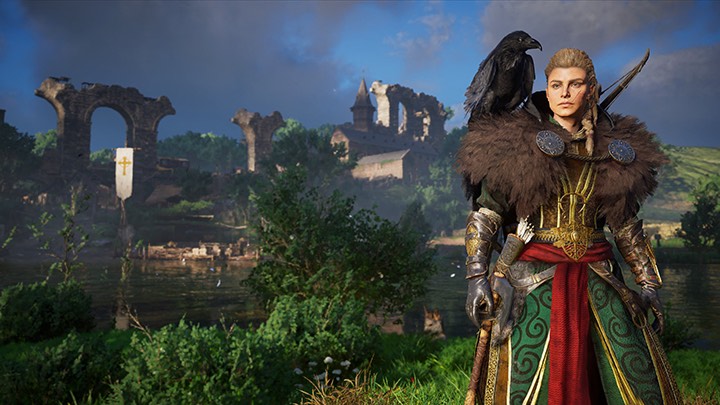
Turns out, that indeed, viking women, compared to other European tribes and nations at the time, enjoyed more significant authority and more freedom, mostly in terms of their rights. Of course, life was organized along the classic division anyway, with women being concerned about the household and anything within its boundaries, and men traditionally taking care of anything outside, including agriculture.
What did the vikings eat?
The vikings didn't have a particularly definitive, viking dish. Living in the north, they needed a lot of energy, and therefore consumed foods rich in fat, particularly important in winter. Their diet was slightly more varied in the more fertile areas of England than in Scandinavia. According to the Anglo-Saxons, the Vikings devoured food at an astonishing pace.
They consumed a lot of fish, meat, dairy and grain products, getting their carbs mainly from forest fruits and honey. Those who were not engaged in the production of food, had to buy it. It is said that the famous Swedish Wasabröd has its roots in those ancient times.
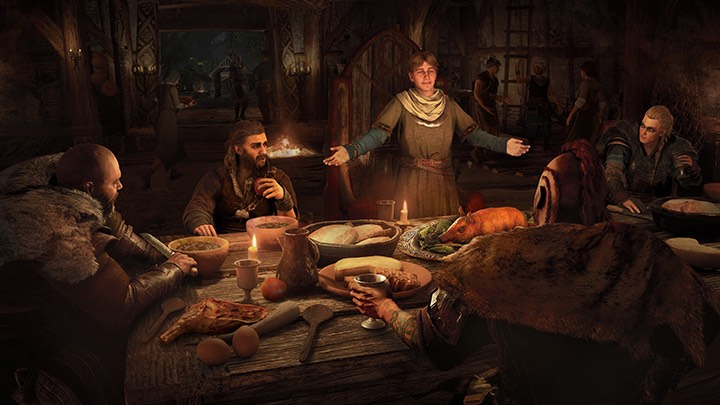
However, things changed when most men went on overseas expeditions, often lasting several months. At those times, the responsibility of running the settlements shifted to women, who hunted and sometimes fought. They also had more social freedom and were able to make independent decisions concerning their lives.
Scandinavian women were far better off than their counterparts across continental Europe. The specificity of their life has brought them to understanding that cooperation is imperative to survival. When men set out to trade and explore the world, women back home maintained the cultural and societal backbone of their nations. Although legally often represented by brothers or husbands, as girls or young women they enjoyed broad independence. They could decide about getting married, had the right to divorce, the right to inherit after their husband or childless members of their families. They were also free to trade, craft, and participate in the expeditions.
Ewa Strukowska
On the basis of preserved sources – both written and archaeological – we can conclude that women enjoyed great esteem in the so-called viking world. They could divorce and, under certain circumstances, they could also attend thing fields/assemblies.
Leszek Gardela, PhD
Gardela notes, however, that the social position of men and women wasn't equal. Men held a degree of superiority, but it was more a matter of women performing different roles than men, rather than being simply submissive to them. Were there any female warriors such as Eivor? Historical sources seem to confirm it:
Written sources give names and describe the actions of many such women. We have the legendary Hervor, to name one of them, who allegedly led her own band of vikings, and was an avid warrior from an early age. It seems to me that in certain circumstances, women would reach for arms and fight alongside men – but this was not the norm. It is possible that a large proportion of these women came from elite backgrounds, which would not only be more liberal, but also more legitimized to cross various social boundaries, including those concerned with gender.
Leszek Gardela, PhD
Speaking of warlike women, it's impossible not to mention the Valkyries, ”choosers of the slain” from the Norse mythology. Legends about them have probably been informed by real events and actual female warriors. Over time, rumors and stories about them turned into legends and myth. Among the vikings, the most famous female warrior was Hervor.
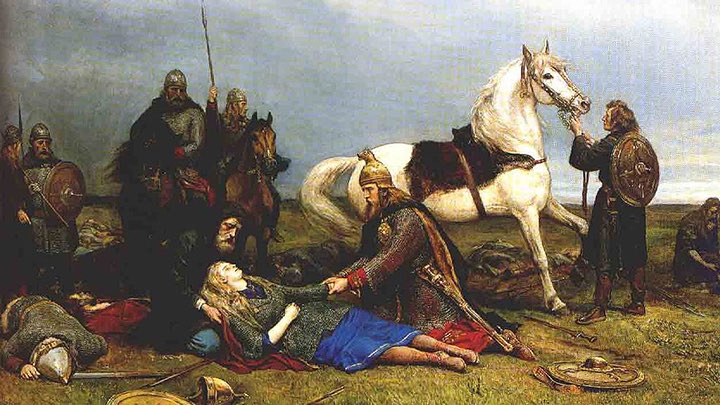
Oracles, shamans, and religion
The beginning of our adventure in Assassin's Creed: Valhalla includes, among other things, a visit to the local oracle, which, as it turns out, isn't mere fantasy. Eivor seeks to understand recent visions – with the help of Valka. Religion really played a significant role in viking life and was concerned with everything – from success in battles to regular activities and problems of the daily life. Both men and women could be spiritual guides.
There was a whole range of religious practices – from ceremonies dedicated to gods and supernatural beings to magical practices aimed at "manipulating" human life and fate. These activities often involved shamanic practices. "Seidr magic" allowed one to make contact with the spirit world, sent their souls or senses into the world in animal form, control the weather, or enchant weapons. Archeology attests to the existence of such people (we know graves with magical objects, wands, amulets, etc.), but the "authenticity and effectiveness" of their actions is a matter of interpretation.
Leszek Gardela, PhD
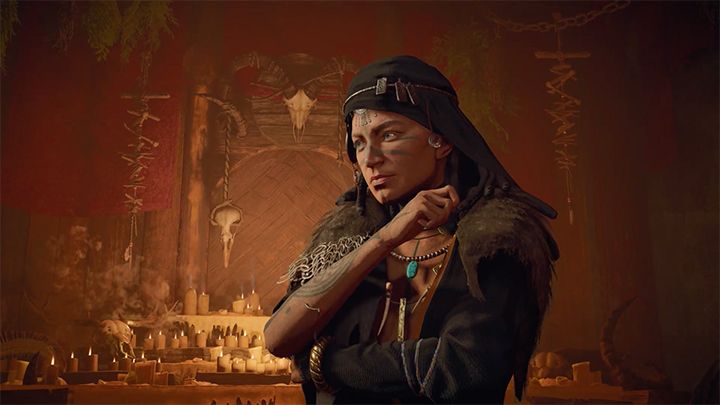
A certain equivalent of the in-game Valka is probably the character of Volva – an oracle who predicted the future, and knew about herbs and healing. She traveled a lot, and visited many settlements; perhaps she was famous enough to be invited by people. Another kind of link between people and the gods were local priests:
Godi / gydja (priest / priestess – literally meaning a god) were, on the one hand, lay people appointed by the community or rulers to perform the rites. On the other hand, there are reports and findings suggesting that they were people who completely devoted themselves to this function (we can't be sure whether it was off their own accord, or by the decision of family, for instance).
Ewa Strukowska
For vikings, it was extremely important to have good relations with each of their many gods, even if they all exhibited typically human qualities. Various ceremonies were regularly held in their honor. One of the most important were the consecration ceremonies called "Blót". These were typically sacrificial rites. Vikings sacrificed items, animals, and even people in return for specific benefits.
One of the most often sacrificed animals were horses – their blood was collected in bowls, and their flesh was cooked and eaten. Blood would be splashed on the altar and sprayed on people. These ceremonies also served the wealthier members of the community as a way to display their power and wealth. They often were feasts delivered to a congregation. In addition, there are reliable reports that people were also sacrificed during "blót" ceremonies. The god who "demanded" such sacrifices was, for example, Odin.
"Blót" ceremonies are consecration ceremonies. They weren't set on a particular day, rather, they were part of every holiday or celebration. The etymology of this term comes from the words meaning "sacrifice," "sacrifice," but also "blood." The essence was the sacrifice, the gift of food offerings to the gods or, in special cases, blood – usually animal, but human sacrifices were also likely made. Part of the ritual was spraying people, objects, and places requiring it, with blood. It was about the connection between life and the sanctification of the environment, a connection with the divine and supernatural spheres.
Ewa Strukowska

Social "minigames" and tattoos
In the end, we left the most relaxed and carefree aspect of being a viking – both in Assassin's Creed: Valhalla, and probably in reality, that were games, also of the social kind. We have a game of dice (Orlog), an unusual duel with rhymed insults (Flyting) (more characteristic of the territories in England) and competitions in drinking, or fishing. What was it like in reality?
Archeology and written sources give us a lot of information about games. There were specific forms of wrestling, horse fighting, swimming competitions, "ball," and board games, such as Hnefatafl [a chess-type game – ed. note]. Many of these games required strength and dexterity – this helped the vikings to cultivate their physique.
Leszek Gardela, PhD
In addition to feasts (usually on holidays that could last several days), the vikings sang, wrote poetry, listened to songs and stories of skalds, as well as played music (plenty of instruments were uncovered by archaeologists). They also competed in "sports" competitions – wrestling, various types of arcade or power games, cross-country running, and competitions related to combat prowess. In addition, we have many quite well preserved board games, generally called Tafl. And here's something interesting – it wasn't just entertainment. These were also used in religious context.
Ewa Strukowska
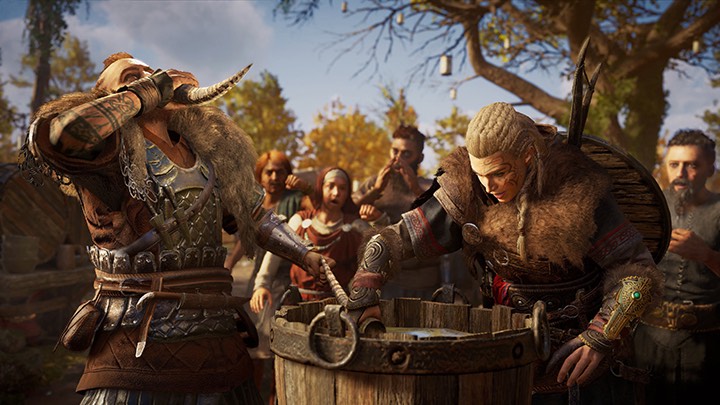
In addition to indulging in spare-time activities, we can go to a tattoo artist in the village to decorate your body. The creators have really invested a lot if time into preparing the wearable ink. Did vikings really do that? The answer isn't clear-cut, since skin obviously isn't as lasting as bones. In fact, the only suggestion that vikings did wear tattoos, or at least knew about the art of tattooing, is information from an Arabic merchant, who during his travels encounter the so-called Gardariki – often considered Norse people, they colonized the region of rivers Volga and the Dnieper.
There are some indications that the Vikings may have decorated their bodies with tattoos – one of them is the account of Arab traveler Ibn Fadlan. He mentions that the bodies of the Rus' people, whom he met on the Volga were decorated with various patterns (however, we do not know whether they were tattoos or simply paintings). Ibn Fadlan's account of the burial of a Rus dignitary coincides perfectly with what archeology shows us, that there's certainly credibility to his account.
In Vendel, central Sweden, for example, a small iron object was found, sometimes interpreted as a tool for tattooing. Interestingly, written sources also provide information about eye painting by men. From archaeological materials, in turn, we know about intentional modifications of teeth (cutting grooves in them and likely filling them with dye).
Leszek Gardela, PhD
How "viking" is AC: Valhalla, then?
So, has Ubisoft in the end produced a credible world? We hope this article will allow you to appreciate it more and examine it more thoroughly, maybe inspire you to do more research yourself. Let us know if you yourself have stumbled upon unique curiosities – or, on the contrary, some huge inconsistencies? In a computer game, anything is possible, but the main thing is what we enjoy. The size of Valhalla's open world and the variety of activities included there is just dazzline.
DISCLAIMER
The text was created in cooperation with Ubisoft.
